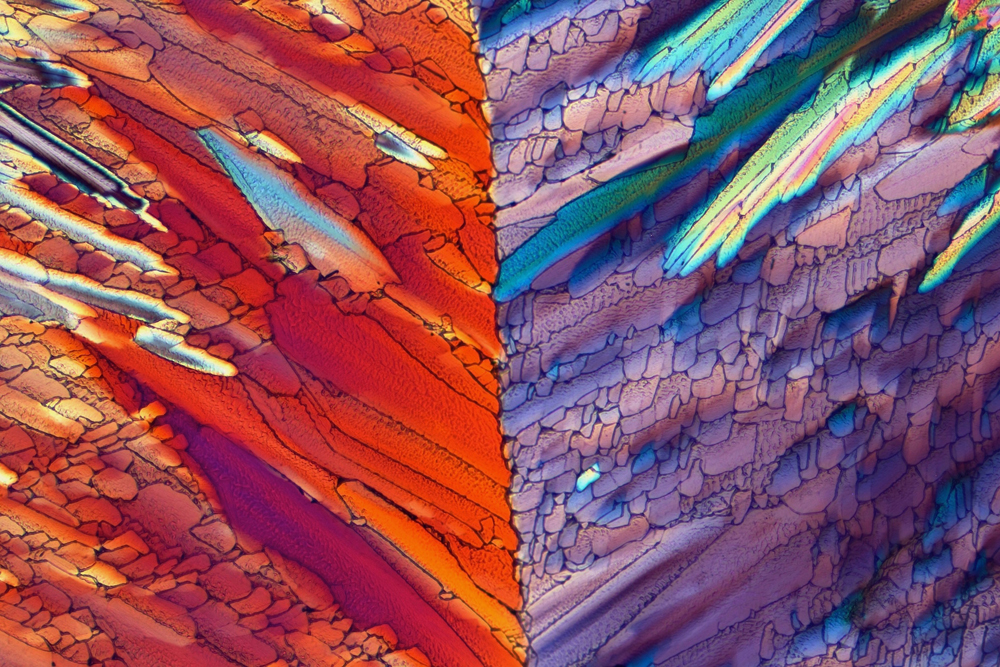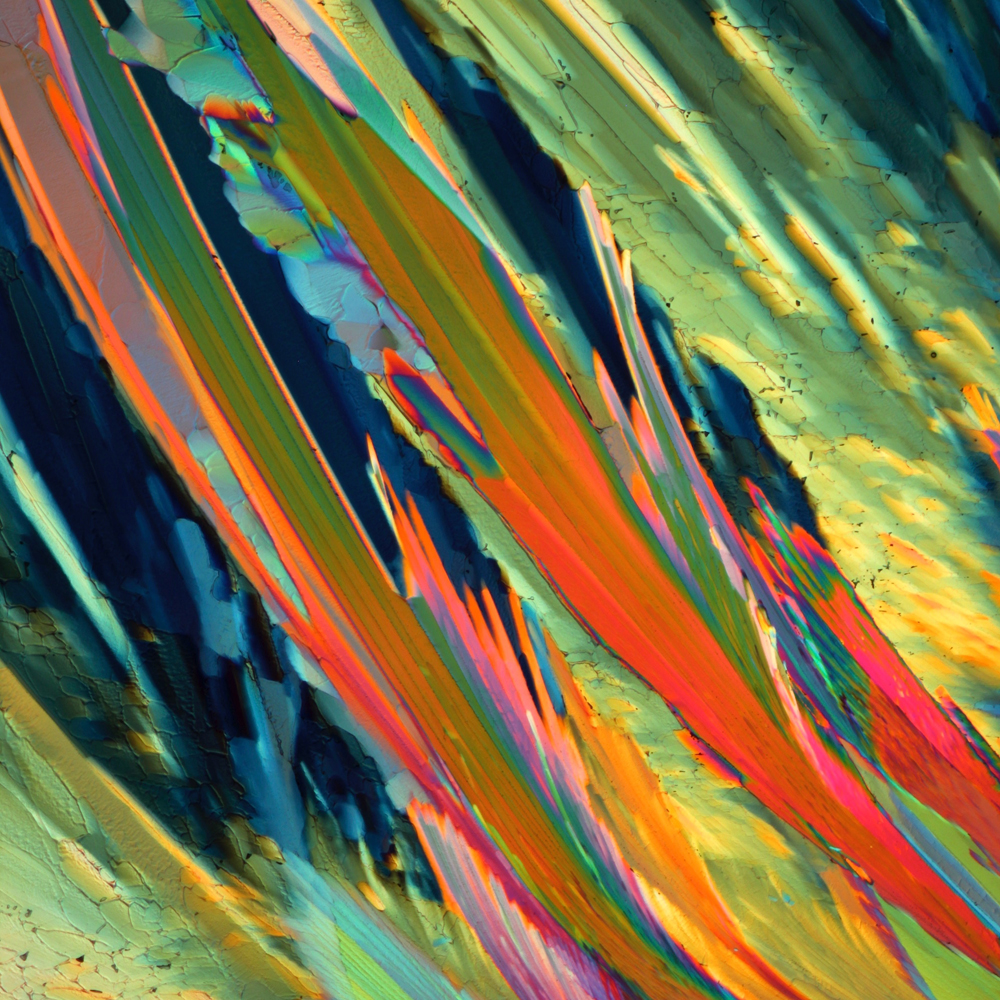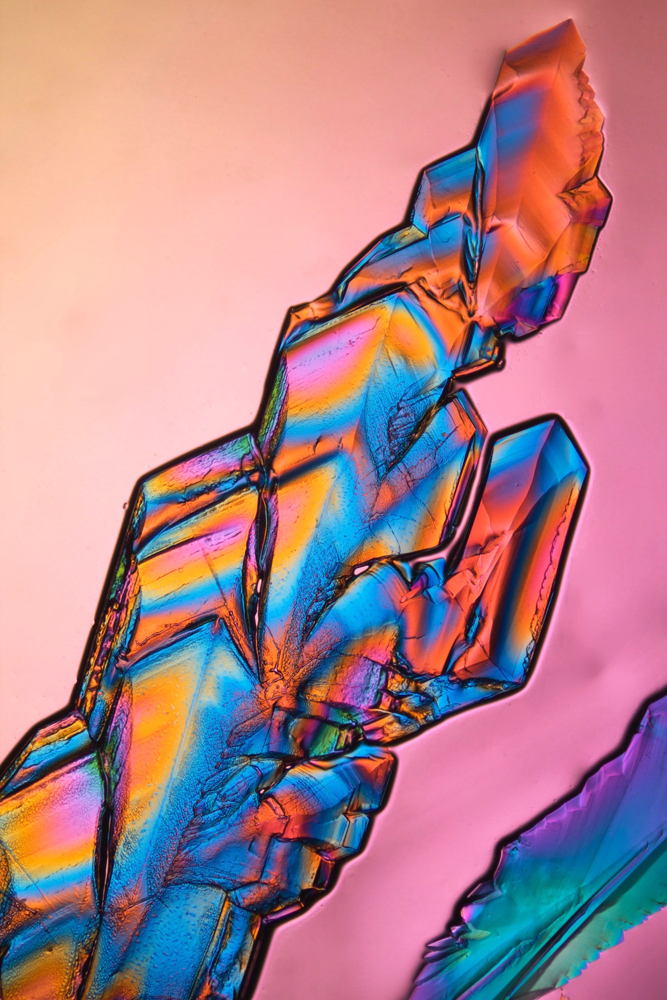Photos: Amazing Microscopic Views of Italian Cocktails
Alcoholic art

Despite the beauty of Campari (seen here) and other alcoholic beverage crystals, Cesare's favorite subject is rocks. Some are particularly challenging. Sedimentary rocks like calcite and dolomite, for example, create dull images. However, he and his colleagues have developed ways to get color from these stones in a project called DolomitiArtRock.
Split the difference

Campari crystals appear red on the left and purple on the right due to differences in orientation and thickness. Polarized light creates brilliant colors without post-processing of the images.
Sea grass, or drink in a glass?

Feathery crystals of Campari pop in red and green in this image by geoscientist Bernardo Cesare. The Italian beverage proved sugary enough to create complex crystals that Cesare could photograph using polarized light.
Limoncello snowflake

That's no ice crystal – it's Italian geologist Bernardo Cesare's mother-in-law's homemade limoncello. The drink, a favorite in southern Italy, is made from lemon zest soaked in spirits and then mixed with simple syrup. Simple syrup, of course, is quite sugary, meaning that when drops of limoncello dry, they form beautiful sucrose crystals.
Limoncello up close

Homemade limoncello looks like a map of a Norweigan fjord under the microscope. Crystals from the sugary drink are revealed by polarized light.
Follow Stephanie Pappas on Twitter and Google+. Follow us @livescience, Facebook & Google+.
Get the world’s most fascinating discoveries delivered straight to your inbox.

Stephanie Pappas is a contributing writer for Live Science, covering topics ranging from geoscience to archaeology to the human brain and behavior. She was previously a senior writer for Live Science but is now a freelancer based in Denver, Colorado, and regularly contributes to Scientific American and The Monitor, the monthly magazine of the American Psychological Association. Stephanie received a bachelor's degree in psychology from the University of South Carolina and a graduate certificate in science communication from the University of California, Santa Cruz.


